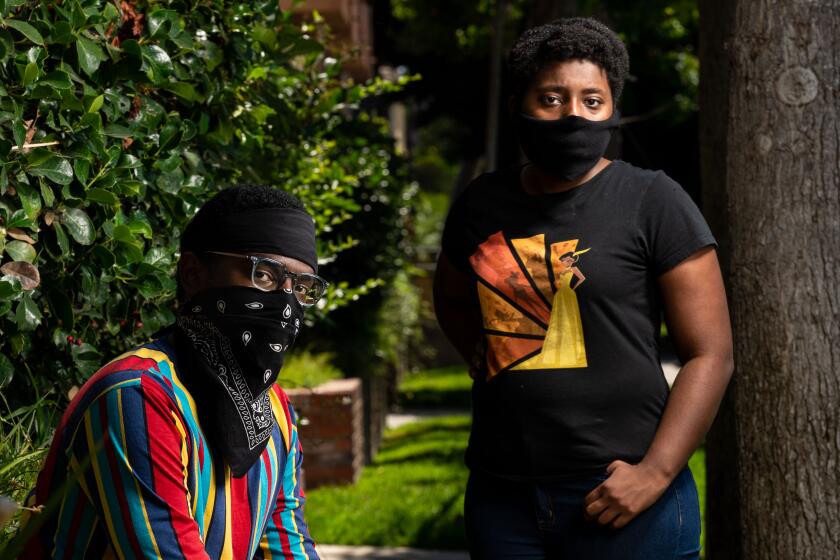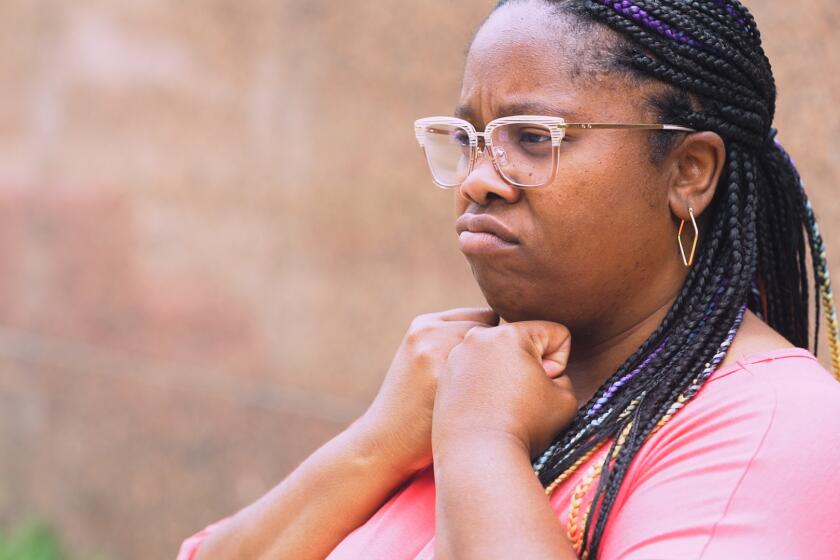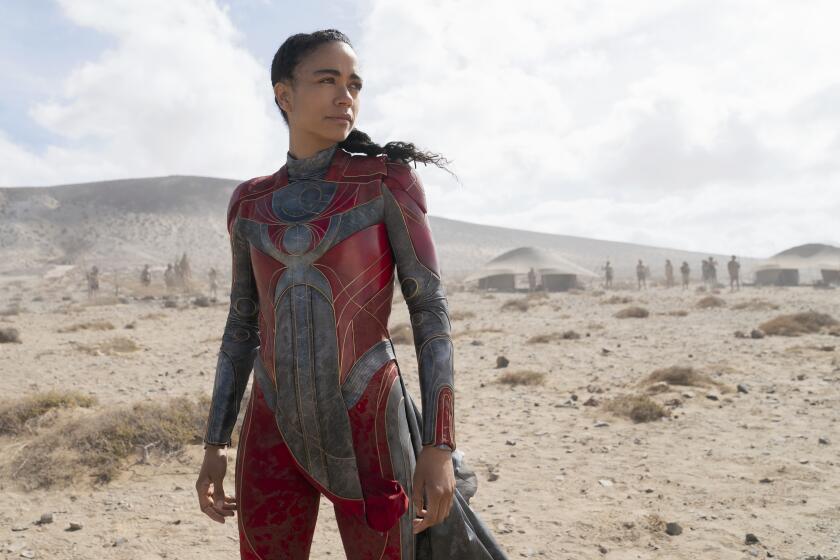How an acclaimed cartoon shines a ‘crucial’ spotlight on Black American Sign Language
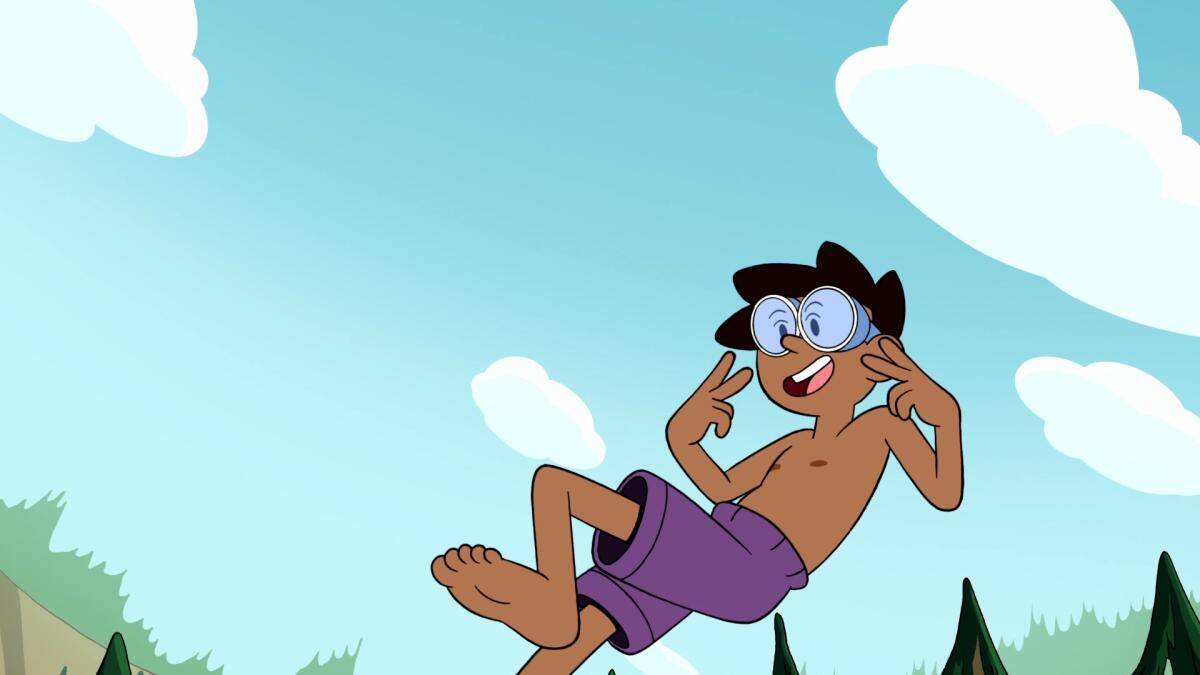
- Share via
“Craig of the Creek” is primarily set in a wooded patch of nature where the children of surrounding suburbs gather to play. But in its ongoing fourth season, the Cartoon Network series has increasingly expanded its stories beyond those boundaries with episodes that delve into the home lives of its ever-expanding ensemble.
In “The Champion’s Hike,” premiering Monday, the title character heads to his friend Jackie’s house before going to explore a waterfall. The scene features Jackie, who is deaf, signing Black American Sign Language with his dad as he heads out of the house.
It’s a moment that the episode’s consultants, from Southern California Black Deaf Advocates, point to as a highlight of their experience on the series.
“I teach parents [who have deaf children] how to sign, so the fact that a Black father was signing to his son, that exposure and that emphasis was so amazing,” said Deaf mentor Bibi Ashley through a sign language interpreter during a recent video call. “Just seeing that interaction, that was my favorite part.”
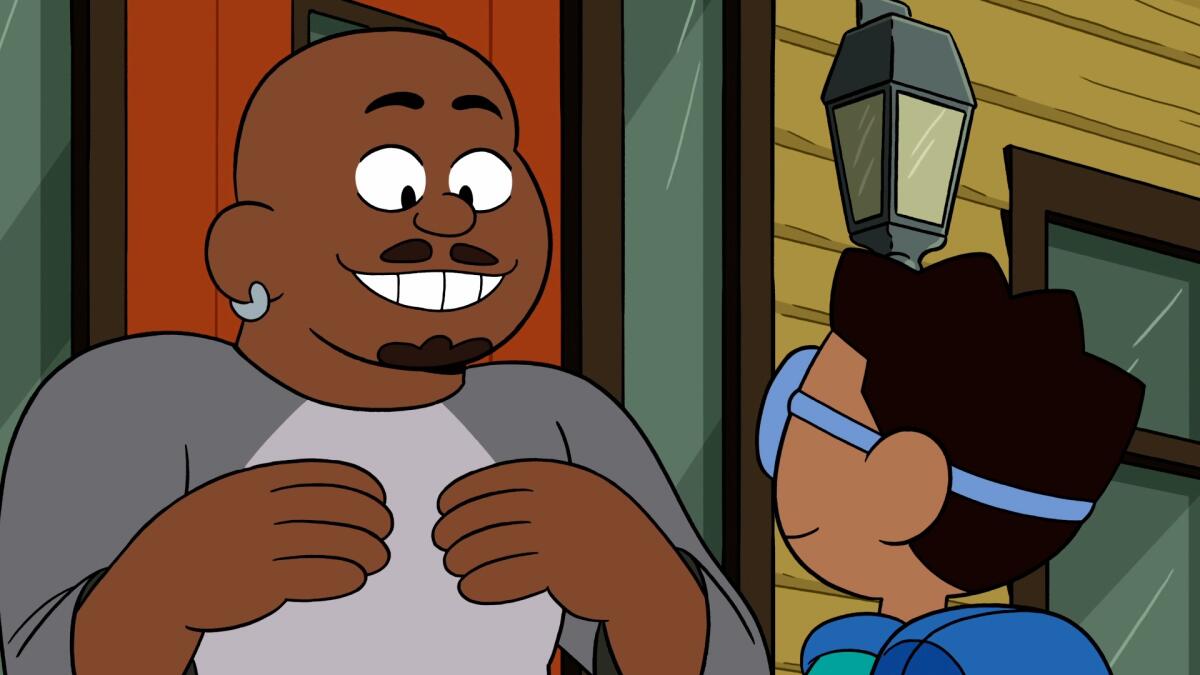
Alice Rash, a teacher at the California School for the Deaf, added that she was impressed by the nuance in Jackie and his father’s exchange, like the use of fingerspelling.
“It’s very important for fingerspelling to be clear,” said Rash through a sign language interpreter. “For ‘have fun,’ they fingerspelled the word ‘fun’ very clearly, which is very typical, instead of using the sign for ‘fun’ ... It was perfect.”
“The Champion’s Hike” also marks a representational milestone. Jackie and his dad are among the first BASL users to be featured in children’s programming. Used among Black Deaf communities across the country, BASL is a distinct variety of ASL that is distinguishable by elements such as the signer’s body language and facial expressions. In addition to using a larger signing space, BASL users also use more two-handed signs and incorporate African American English slang.
Amid nationwide marches for Black lives, Black animation professionals speak about systemic racism in the industry and the need for diversity.
It’s par for the course for “Craig of the Creek,” which has been lauded for its inclusive storytelling and the diversity of the creek kids’ backgrounds and interests since its 2018 debut. Part of the reason this Emmy-, GLAAD- and NAACP Image Awards-nominated show resonates with its audience is the authenticity of the characters and their storylines.
Creators Matt Burnett and Ben Levin credit the entire crew for making the show what it is. Originally inspired by their own childhoods, the pair has encouraged the show’s creative team to bring their experiences to the series as well.
“It became a much more universal but specific and vast look at all the different ways to be a kid and all the different kinds of kids you meet and play with,” said Burnett of drawing on the crew for ideas.
Jackie’s transformation from a scary henchman-type character to the confident and competitive cool kid that Craig is getting to know now can be attributed to this collaborative spirit.
Known as “the Arm” for his powerful throw, Jackie was introduced during Season 3 as a member of a group of intimidating, athletic kids called the Champions of the Other Side of the Creek. Although they originally played an antagonistic role, Levin was quick to point out that “they’re not, like, villainous.”
“They just are playing differently,” said Levin.
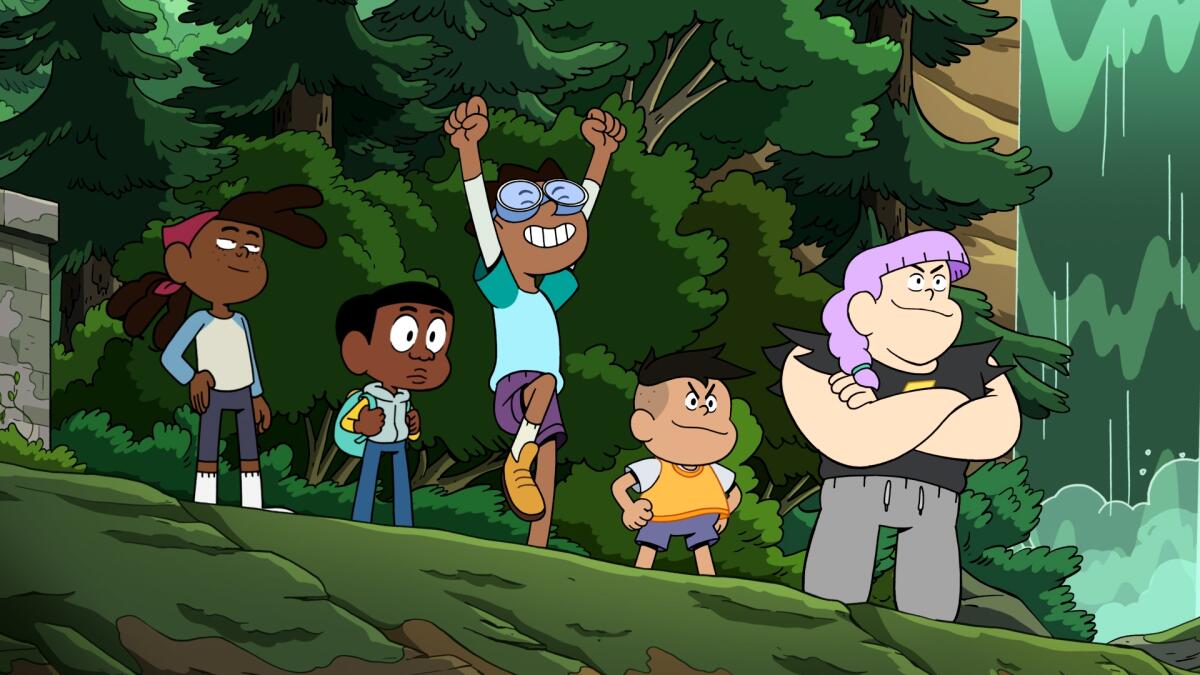
After the rivalry was resolved came the opportunity to explore who these Champions really were outside of their former leader’s influence. After the start of work on “Dodgy Decisions,” about Craig and Jackie being captains of opposing dodgeball teams, character designer Nick Winn suggested that perhaps Jackie could be deaf or hard of hearing.
“I just really liked Jackie,” said Winn. “I liked that he was one of the silent champions [and] he was insanely anonymous. … We hadn’t really heard him speak.”
After happening upon a video of someone teaching sign language on TikTok, Winn brought up the idea of Jackie using sign language. Winn’s idea was appealing because it presented an opportunity to explore the reason for Jackie’s silence as well as the chance for the show to be more inclusive.
For deaf Angelenos of color, and particularly those who are black, the language they sign among themselves is strikingly different from what’s on TV. The tension is evident in a seemingly simple phrase like “Black Lives Matter.”
“We’re always interested in giving every kid an opportunity to see themselves or see other kids who are not like them but see how they are the same in some ways,” said Burnett. “So it made sense to do this.”
Storyboard artist Deena Beck, whose childhood best friend was the child of deaf parents, embraced Winn’s idea.
Recognizing that her experience was both on the periphery and outdated, though, Beck’s first step was to learn about what the experience is like for people now. She even reached out to her old friend for insight into all the considerations that would be needed to do the character justice, as well as some help on the early stages of signing.
“‘Who is Jackie?’ ‘How does Jackie like to communicate?’ ‘What’s comfortable for him?’” Beck recalled of the questions the series’ creative team asked. “ There’s so many different forms of communication now.”

The “Craig of the Creek” team then reached out to Southern California Black Deaf Advocates for a meeting that, according to Levin, really informed how to write Jackie.
“They were really great in just saying kids find a way to play together,” said Levin. “If Jackie was playing with other kids he might use some signs that they don’t know [or] he might just use some gestures that they can understand and they would just play. And that was beautiful.”
“Our conversations with them really encouraged us to embrace the inherent challenge and complication that there is when a non-hearing kid is in a group of kids who aren’t deaf,” added Burnett. “That’s what reality is … so let’s embrace the fact that they gotta find a way to communicate.”
Details such as Jackie’s fellow Champion Keun-sup having learned ASL over the years of their friendship, or Jackie and Craig deepening their friendship through texting, came from conversations the “Craig of the Creek” team had with SCBDA. After learning how much facial expressions and movement of a person’s eyes and eyebrows are significant for BASL users, Jackie was even redesigned so his eyes and eyebrows are visible through his glasses.
Storyboard artist Ashley Tahilan, who boarded “The Champion’s Hike” with Leiana Nitura, explained that the time it takes the characters to sign was one of the challenges for their episode.
“We really wanted Jackie to have a personality, to be more than just ‘the deaf character,’” said Tahilan. “Some of the challenge that came with that is, how are we going to show that? We wanted to do it in a way that feels natural and [that] Jackie is also part of the conversation.”

In addition to providing Black Deaf cultural guidance, the SCBDA also made reference materials related to the signs used in the episodes, which included videos of them signing in real time in order to show the proper timing — as well as slowed-down versions in order to show more precise details to the artists.
“For ASL, more than anything, the technicals have to be super duper on point,” said storyboard supervisor Dave Alegre, who appreciated the SCBDA’s patience with the process. “I quickly realized that the intensity of a stare, inflections in your eyebrows, how you tilt your head, and the speed at which you do things, it’s really a very meticulous thing.”
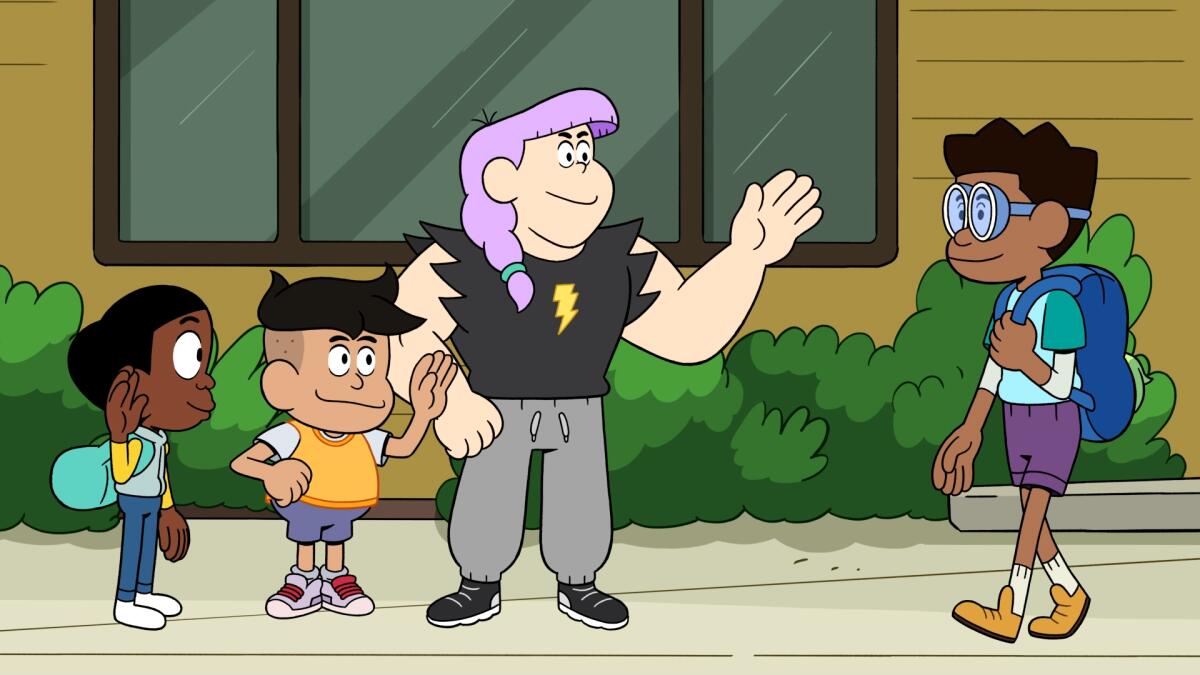
Rezenet Moges-Riedel, an assistant professor at Cal State Long Beach, who also worked as one of SCBDA’s linguistic consultants, explained that it was important for audiences to understand that BASL is not for everybody.
“Black ASL is a cherished language,” said Moges-Riedel through a sign language interpreter. “It’s not something that can just be taught... It’s something that gets picked up through social interactions from just being around each other.”
The history of BASL is tied to the United States’ deep history of systemic inequities. Segregation meant that even after schools were finally built for Black Deaf students, there was limited interaction between the Black Deaf community and the white Deaf community. Since languages continually evolve among those who use them, this separation meant BASL and ASL emerged as two distinct variations of the language.
“Keep in mind that not all Black Deaf people use Black ASL,” explained Rash. “It depends on where you’re from [and] how you grew up. Some Black people don’t know ASL and use BASL entirely.”
‘Eternals’ boasts the most diverse cast in Marvel history — including Lauren Ridloff, a Deaf actor who plays the franchise’s first Deaf superhero.
Even among BASL users, “typically, if Black people are interacting with those who are not, we will adjust,” said Ashley. “We will code switch. We will use the language to match them. It’s important to have the audience know that [BASL is] Black Deaf language.”
Moges-Riedel sees Jackie’s use of BASL on “Craig of the Creek” as an opportunity for more conversations.
“This can be an eye-opening experience for the audience, knowing that there are regional dialects of ASL, different ethno-groups, different variations of sign languages within one country,” said Moges-Riedel.
“It’s [also] so crucial, so important for young kids especially CODAs — children of deaf adults — for them to see representation,” she continued. “Deaf representation is usually white. Jackie breaks down that idea that it has to be someone white all the time. There are Black Deaf people out in the world like us.”
More to Read
The complete guide to home viewing
Get Screen Gab for everything about the TV shows and streaming movies everyone’s talking about.
You may occasionally receive promotional content from the Los Angeles Times.
